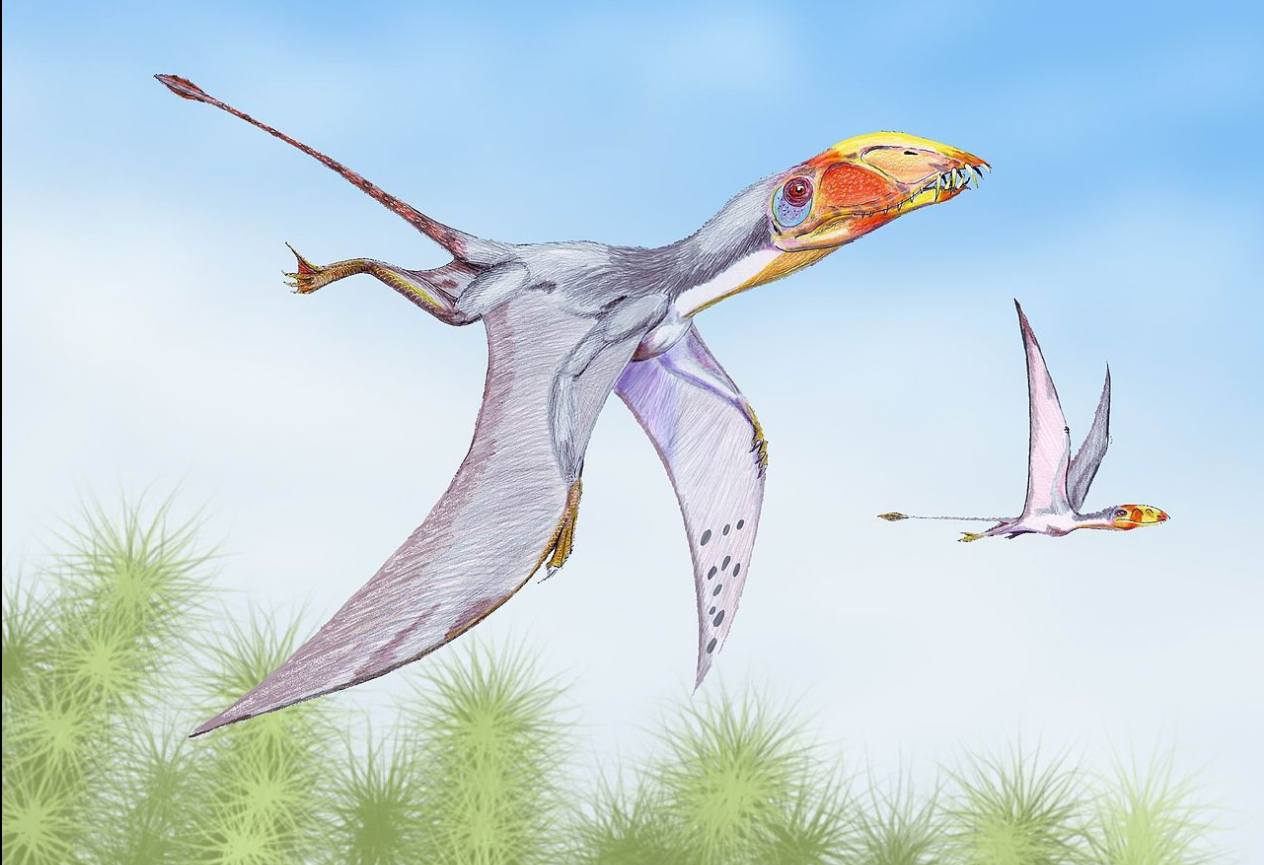fossils to confirm this speculation.
Skull
Dimorphodon had a large, bulky skull approximately 23 centimetres in length, whose weight was reduced by large openings separated from each other by thin bony partitions. Its structure, reminiscent of the supporting arches of a bridge, prompted Richard Owen to declare that, as far as achieving great strength from light-weight materials was concerned, no vertebra was more economically constructed; Owen saw the vertebrate skull as a combination of four vertebrae modified from the ideal type of the vertebra. The front of the upper jaw had four or five fang-like teeth followed by an indeterminate number of smaller teeth; the maxilla of all exemplars is damaged at the back. The lower jaw had five longer teeth and thirty to forty tiny, flattened pointed teeth, shaped like a lancet. Many depictions give it a speculative puffin-like 'beak' because of similarities between the two animals' skulls.

In 1870, Seeley assigned Dimorphodon to its own family, Dimorphodontidae, with Dimorphodon as the only member. It was suggested in 1991 by the German paleontologist Peter Wellnhofer that Dimorphodon might be descended from the earlier European pterosaur Peteinosaurus. Later exact cladistic analyses are not in agreement. According to Unwin, Dimorphodon was related to, though probably not a descendant of, Peteinosaurus, both forming the cladeDimorphodontidae, the most basal group of the Macronychoptera and within it the sister group of the Caelidracones. This would mean that both dimorphodontid species would be the most basal pterosaurs known with the exception of Preondactylus. According to Alexander Kellner, however, Dimorphodon is far less basal and not a close relative of Peteinosaurus.
The cladogram recovered by Andres and Myers in 2013 is reproduced below.
from Wikipedia